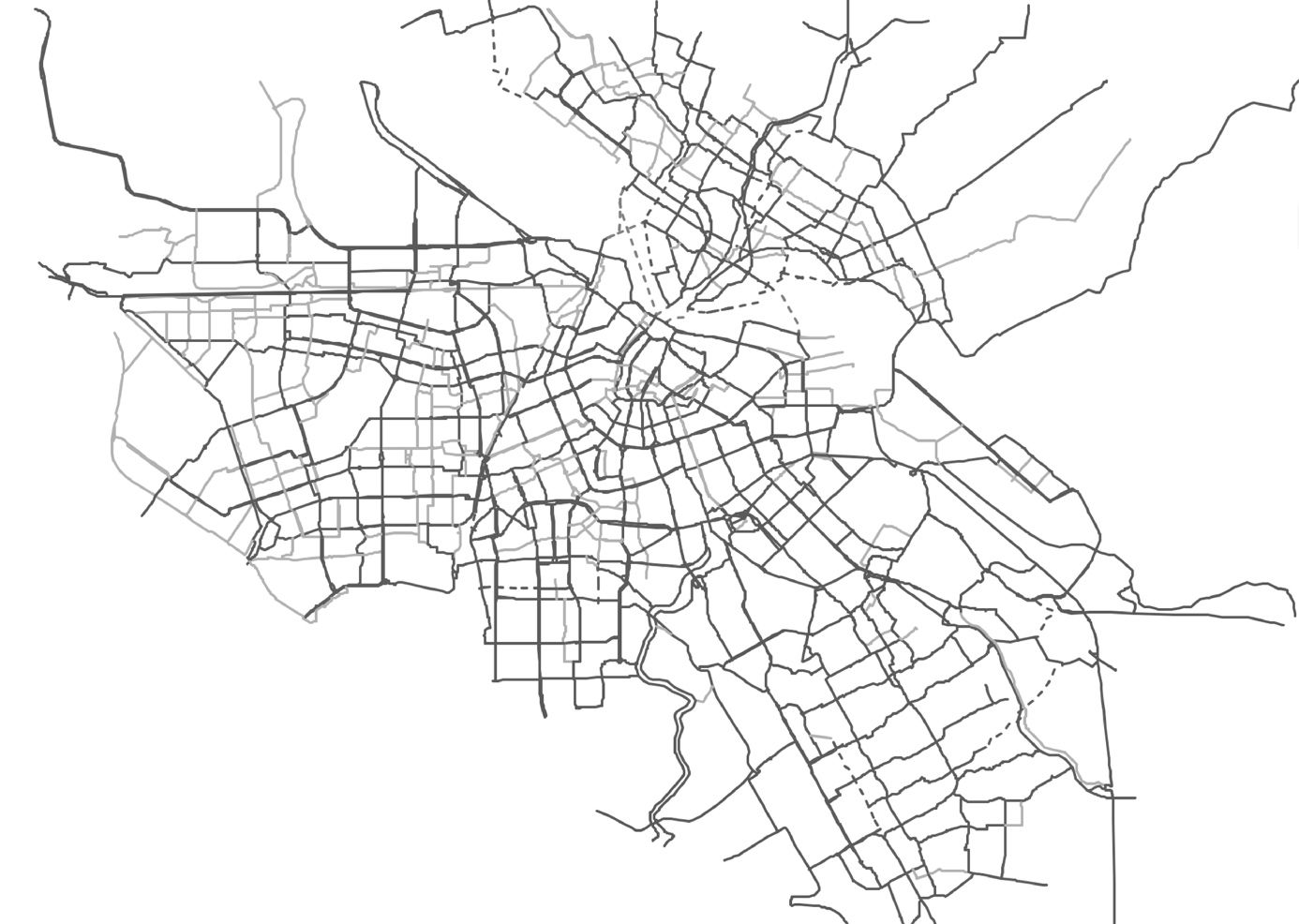Planning and Design of Active Mode Networks in Cities
Subject
Today many cities throughout the world are encouraging their inhabitants to start walking and cycling (active modes), as this is proven to positively affect the livability of cities. To support the decision making of these cities, we create a framework to plan and design active-mode networks, that stimulate walking and cycling. We research active-mode networks in various cities throughout the world –starting with a historical network analysis of Amsterdam. We search for factors that influence our walking and cycling behavior, and use this to design our future cities.

Scientific Challenges
Despite existing studies, that identify various interventions to increase active mode use (e.g. policy measures, new infrastructure, pro-bicycle programs, land-use planning, and restrictions on car use), two knowledge gaps can be identified: First, limited research is combining the two active modes, cycling and walking. Most studies focus on one of the two, while both active modes can have a positive effect on the livability of a city. Second, we know little about the quantitative effects of interventions regarding the development of active-mode networks. Therefore, more research on the influence of different active-mode network designs is required.
Societal relevance
This study creates a framework for city planners and designers, of cities throughout the world, to determine their next step into improving their cities’ active mode share. On the one hand, the framework will help cities, that are “less-experienced” regarding active modes, to design and plan their network. On the other hand, it will guide the cities, that are “more-experienced”, to refine their present network design (e.g. using big data for analyzing the network).

Ilse GalamaStart/end date: 2016-04-01 / 2020-03-31Daily Supervisor(s): Winnie Daamen Promotor: Serge Hoogendoorn |